The Clark Lake Forever Fund works like an endowment. It’s purpose is to ensure support for projects that benefit Clark Lake. How does it work? Contributions to the Forever Fund are held and not spent. Only interest, dividends or capital gains are available to spend, when and if those funds become needed. Otherwise, income continues to build the fund. As Clark Lake Forever implies, it’s a forward-looking project for a community that loves and cares deeply about its heritage.
The Fund’s bedrock is becoming solid. A Clark Lake family has created a matching grant of $50,000. When contributions reach that goal, the resulting $100,000 becomes meaningful for the income it will provide. The chart below shows the progress toward attaining the current $50,000 goal – now at 75%.
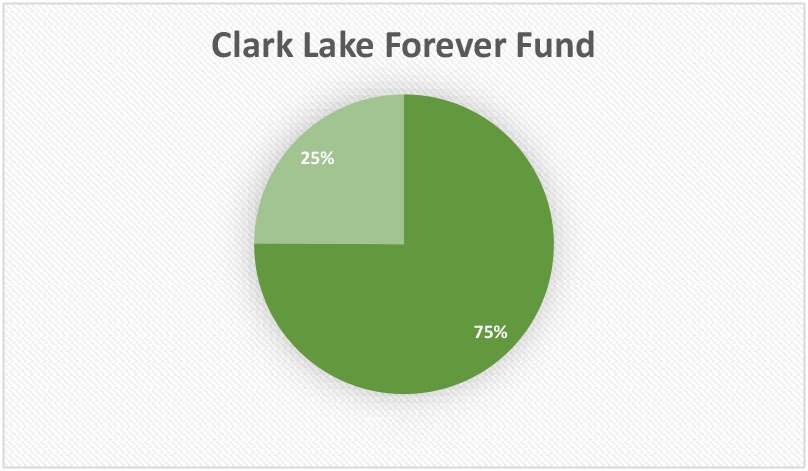
Thanks go to these individuals who are making a difference at Clark Lake
25,000+
Joan Ambs
5,000+
Rick Belcher
Mike & Teresa McKay
1000+
Ted & Pat Ligibel
Sue & David Woodsum
500+
Kevin & Lucia Thomson
100+
Stephanie Niezgoda
Note: Some donors have said they are going to add to the initial amount listed above. That can be done at any time, and the amount will reflect the new total in the next update.
About the Clark Lake Forever Fund
Experience has taught Clark Lake one thing. When it comes to maintaining, saving and/or improving our piece of paradise, outside sources are unlikely to accomplish what Clark Lakers believe should happen. The Spirit Trail, Build the Bell Tower, restoring the Community Center, the Welcome to Clark Lake Sign, DamStrong, and this website are shining examples. They illustrate how caring residents join hands and Stand Up for Clark Lake.
There’s a cost associated with projects, especially in today’s economy. One need only take a peek at recent Spirit Trail projects to see why. The repaving of two sections of the Spirit Trail cost over $50,000 the summer before last. Last summer, sealcoating those two sections amounted to $4,000.
Would you like to give the Clark Lake Forever Fund a try? Clark Lake Spirit Foundation is a 501c3 which could mean tax advantages for donors. A previous story explains how that can be a lift when facing certain tax situations. Click here to read up on it.
To contribute, please write check to “Clark Lake Spirit Foundation” with “Forever Fund” on the memo line. Mail to PO Box 224, Clark Lake, MI 49234. Donations can also be made by credit card through this website. Click here to do so. Use the dropdown to specify the Clark Lake Forever Fund. For the payment option, use the dropdown menu to contribute by credit card. For more information, please email ClarkLakeSpirit@gmail.com.
The Donors and Their Stories
These Clark Lake Forever Fund updates also provide an opportunity to tell about the connections some of the donors have to Clark Lake.
Many at Clark Lake know Joan Ambs. Joan (pronounced “Joanne”), played a big role in the effort to save the Kentucky Point homestead. The historic structure, donated by Laurie and Bob LaZebnick, was floated down the lake and relocated to the County Park. It was Joan who recruited Mike McKay who engineered the amazing feat, and it was she who gave the repurposed structure it’s name – Clark Lake Community Center. The photo below was taken at a Community Center open house celebration. Joan is sitting on an antique couch that belonged to the Ambs family. It’s one of the historic pieces of furniture that grace the house, and today is located at the top of the stairs of the second story.
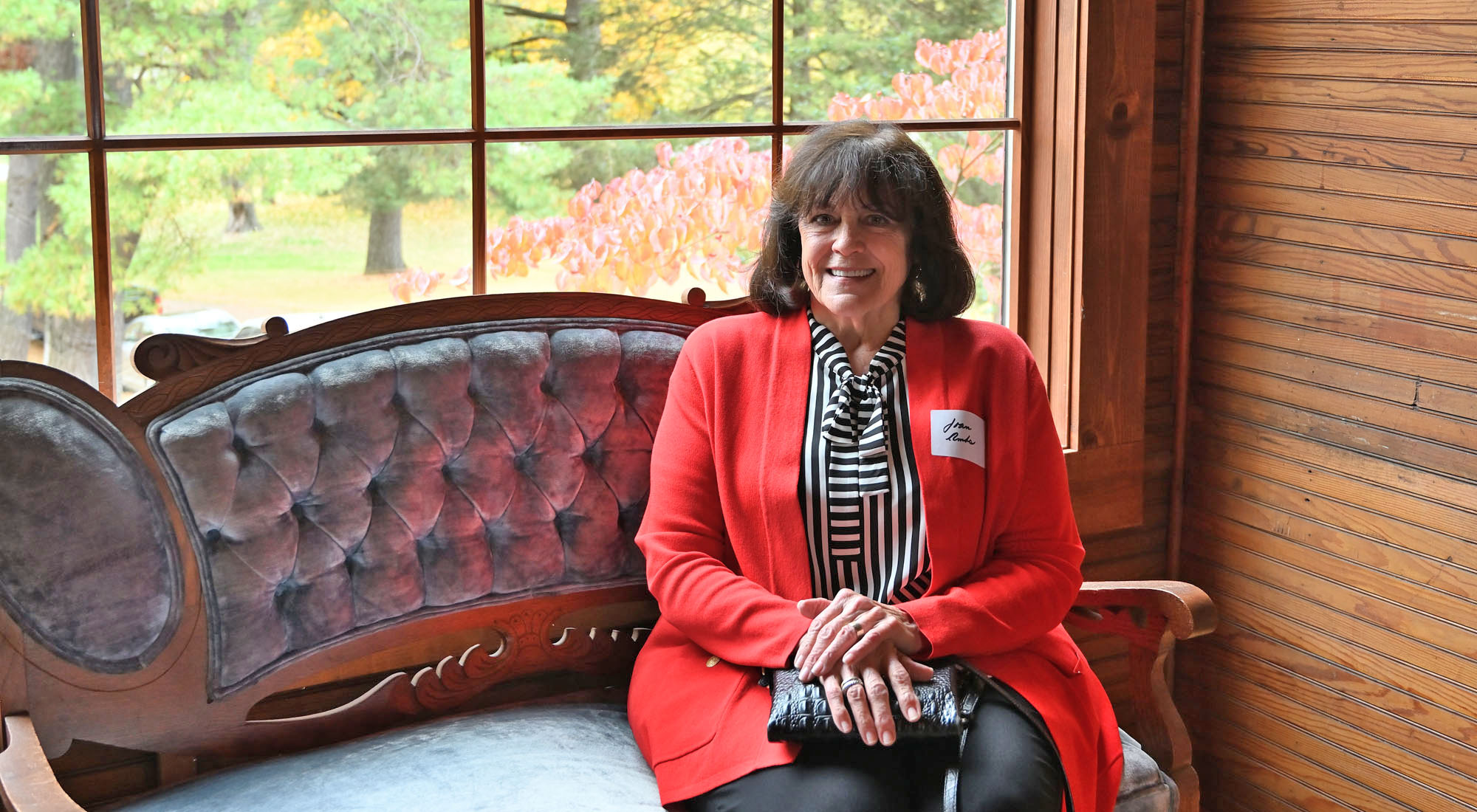
Joan Waite grew up in Dearborn. Her Clark Lake Story began when she and Richard Ambs from Jackson met as students at Eastern Michigan University. Their paths took different directions until 1978 when a cousin reintroduced them. That led to marriage a year later. Richard and Joan with three sons – Andy, Aaron and Ryan – made Clark Lake their permanent home in 1987. Richard passed away in 2019, and Joan continues to live on the north shore, just west of the Beach and Boat Club, surrounded by friends and neighbors.
It took more than desire to move the Kentucky Homestead. Joan points to the many problems waiting to be resolved, and a whole lot of hard work that took place over an extended period of time. Gaining community support came first. As the project progressed, it was also necessary to work through the many details with attorneys and the County. Then came the fundraising for both the move down the lake, and once in place, the building’s first restoration. Joan will tell you how collaboration turned what seem liked an impossible dream into a very real and useful structure at Clark Lake. Mike McKay recalls Joan hosting many planning meetings at the round table at the original Eagle’s Nest. Joan says, without the dedication of that group and other community leaders, saving this 125 year old gem so dear to Clark Lake, would not have happened.
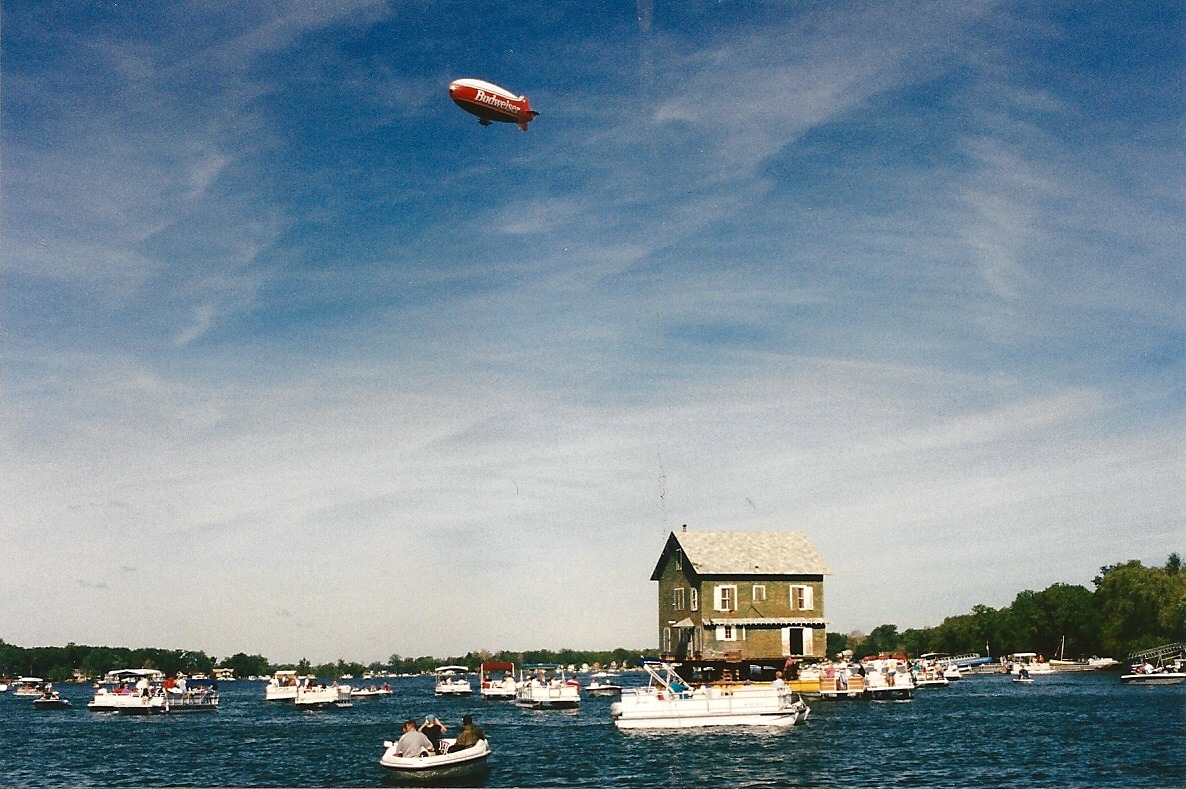
The Community Center is now owned by the Clark Lake Spirit Foundation, and underwent another major restoration a couple years ago. The Community Center’s stated mission is to preserve Clark Lake’s past and to provide a place to gather.
For Mike & Teresa McKay, Clark Lake is home. Mike says “we take pleasure in Clark Lake’s history and the community. And because its home, you want to take care of it.”
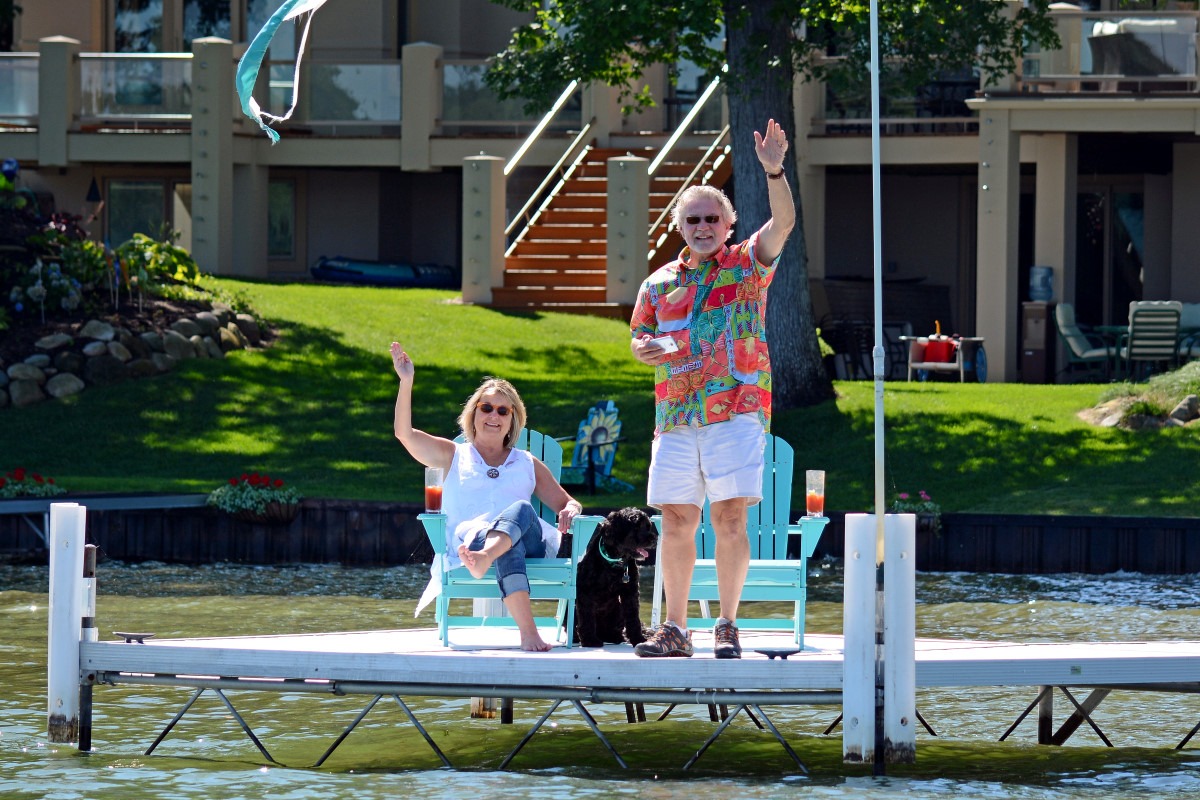
As noted in Joan Ambs story, Mike was instrumental in floating the house from Kentucky Point to the County Park and its restoration once relocated.
He also founded what is now the Clark Lake Spirit Foundation, and for years, served as its president. Fast forward to 2021. After the house had been in the County Park for a couple decades, the Foundation was asked to accept ownership of it. By then, the house was showing 25 years of wear and tear. It was clear to the directors that the house would not be around for long unless a major improvements took place. Mike organized that restoration from attic to crawl space, and today the Clark Lake Community Center is revitalized and fulfilling its mission to preserve Clark Lake’s past and to provide a place to gather.
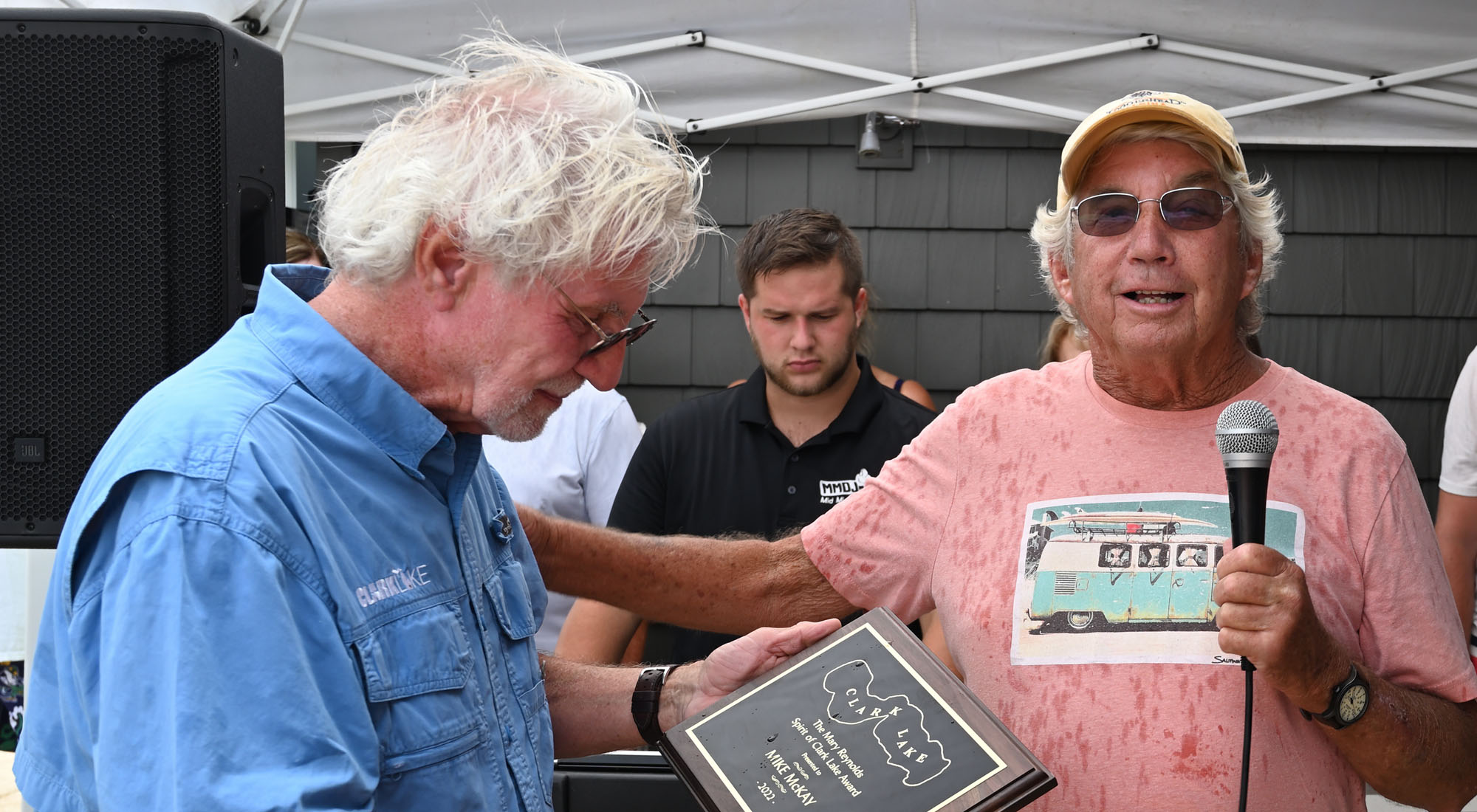 In 2022, Mike was awarded the Spirit of Clark Lake award.
In 2022, Mike was awarded the Spirit of Clark Lake award.
Mike’s accomplishments don’t stop at the Community Center. Recently he managed the construction of the Bell Tower in the Clark Lake Cemetery. That care for the cemetery has a precedent. Twenty years earlier, he and the Foundation constructed the fences and pillars that you see along Hyde Road. No longer would boaters desecrate graves by parking their trailers over them. What else? Through his company, Mike funded the DamCam and Spirit Cam that give viewers of the website a 24/7 live stream of Clark Lake. Those at Clark Lake also know Mike as a builder. He and his company have built or upgraded over 100 houses that grace the lake.
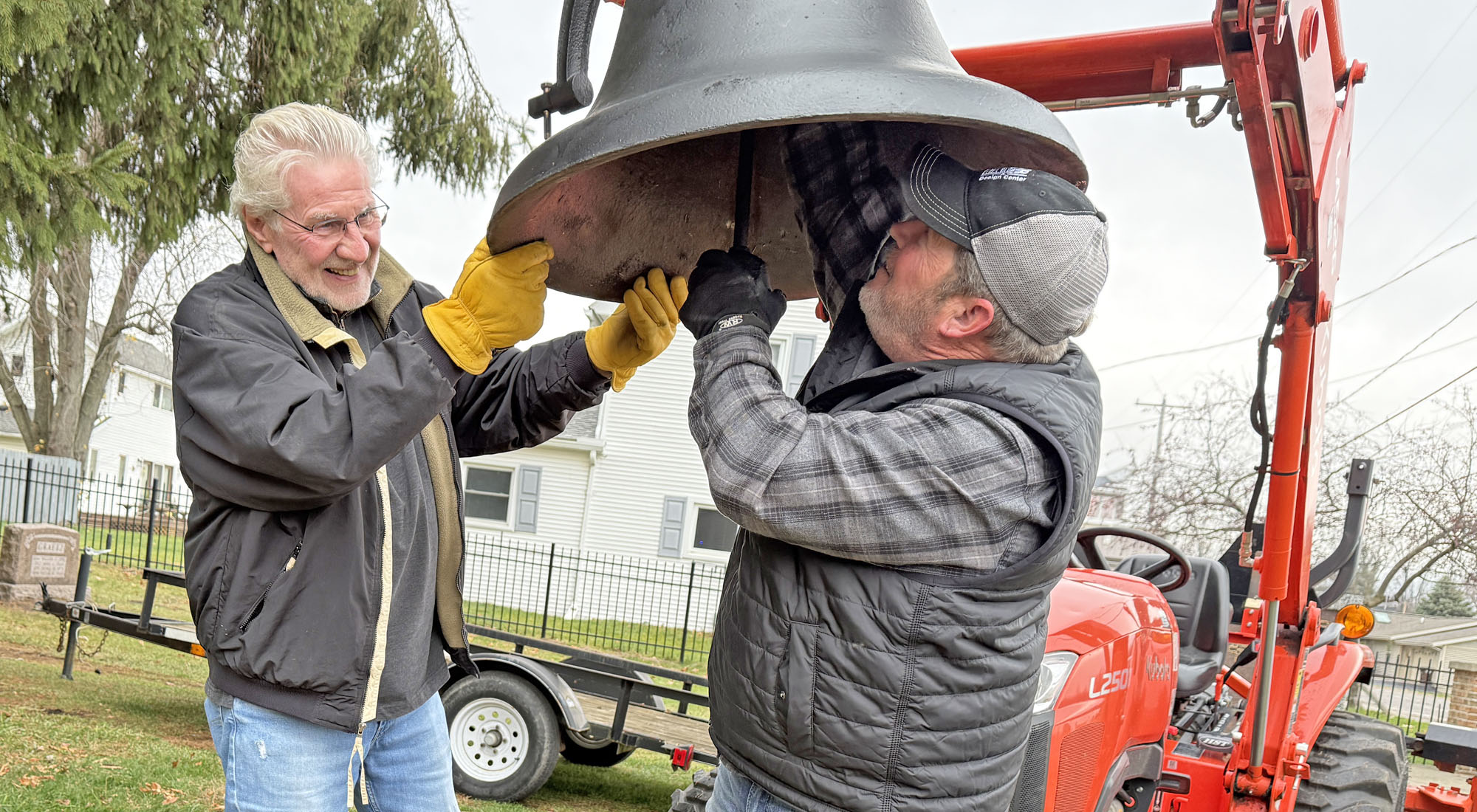
To read more about Mike McKay, click here for his My Clark Lake Story.
 Another recent contribution to the Clark Lake Forever Fund comes from Ted & Pat Ligibel. Ted wrote the book “Clark Lake, Images of a Michigan Tradition.” His own family is steeped in Clark Lake history. His maternal great grandparents, Ben and Frances Rensch were the first to develop the Cove, or as it was called in those early days, Toledo Park. His paternal great grandparents, William and Julia Preece, owned several cottages along the Eagle Point shoreline. Both the original Preece cottage and Rensch property are still owned by descendants.
Another recent contribution to the Clark Lake Forever Fund comes from Ted & Pat Ligibel. Ted wrote the book “Clark Lake, Images of a Michigan Tradition.” His own family is steeped in Clark Lake history. His maternal great grandparents, Ben and Frances Rensch were the first to develop the Cove, or as it was called in those early days, Toledo Park. His paternal great grandparents, William and Julia Preece, owned several cottages along the Eagle Point shoreline. Both the original Preece cottage and Rensch property are still owned by descendants.
This photo shows Ted, his brother Mike, and father, Bill Ligibel in a canoe. The photographer is looking to the southeast, capturing the Sullivan/Belcher dock and the Donley/Cagney cottage. Spence and Kathy (Cagney) Maidlow replaced the cottage with a home many decades after the picture was taken.
Sue and Dave Woodsum own one of the Edgewater Condominiums at Eagle Point. When they began to cultivate the garden along the fence near the Eagle’s Nest, they found something unexpected – asphalt. Over time, they added topsoil and today you wouldn’t know that not far below the surface are the remnants of the Eagle Point Hotel driveway. Here they are working on the garden (photos from June 2021).
You might have seen Dave Woodsum on his paddleboard with a basket, picking up trash like pop cans, red solo cups and golf balls.
For a blast from the past, check out this video featuring Ted Ligibel on a “necessary” part of Clark Lake history and how it’s represented at the Community Center.
Click for more about Completing the Movement.


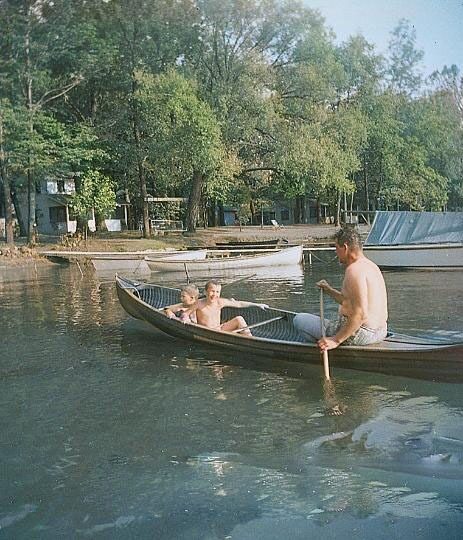
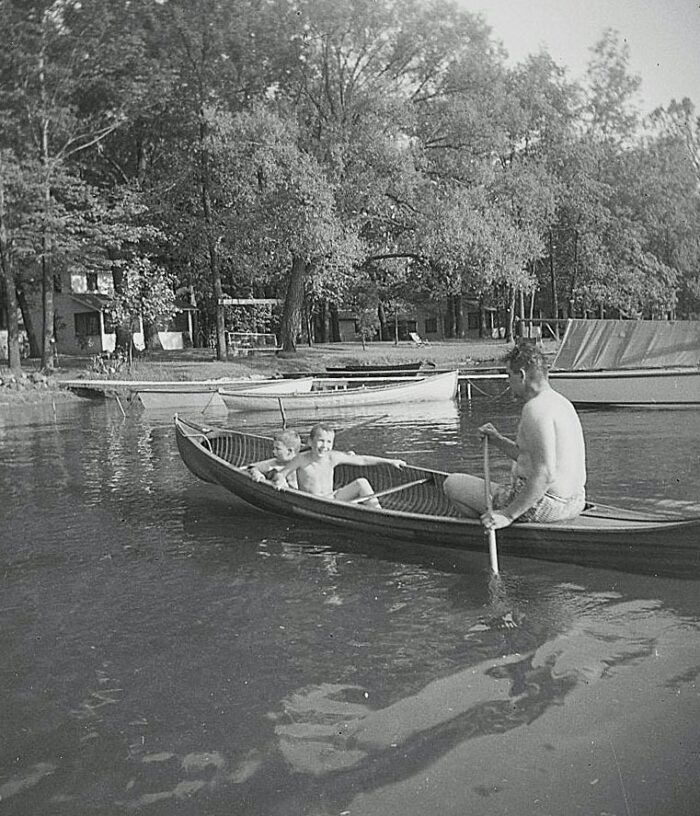
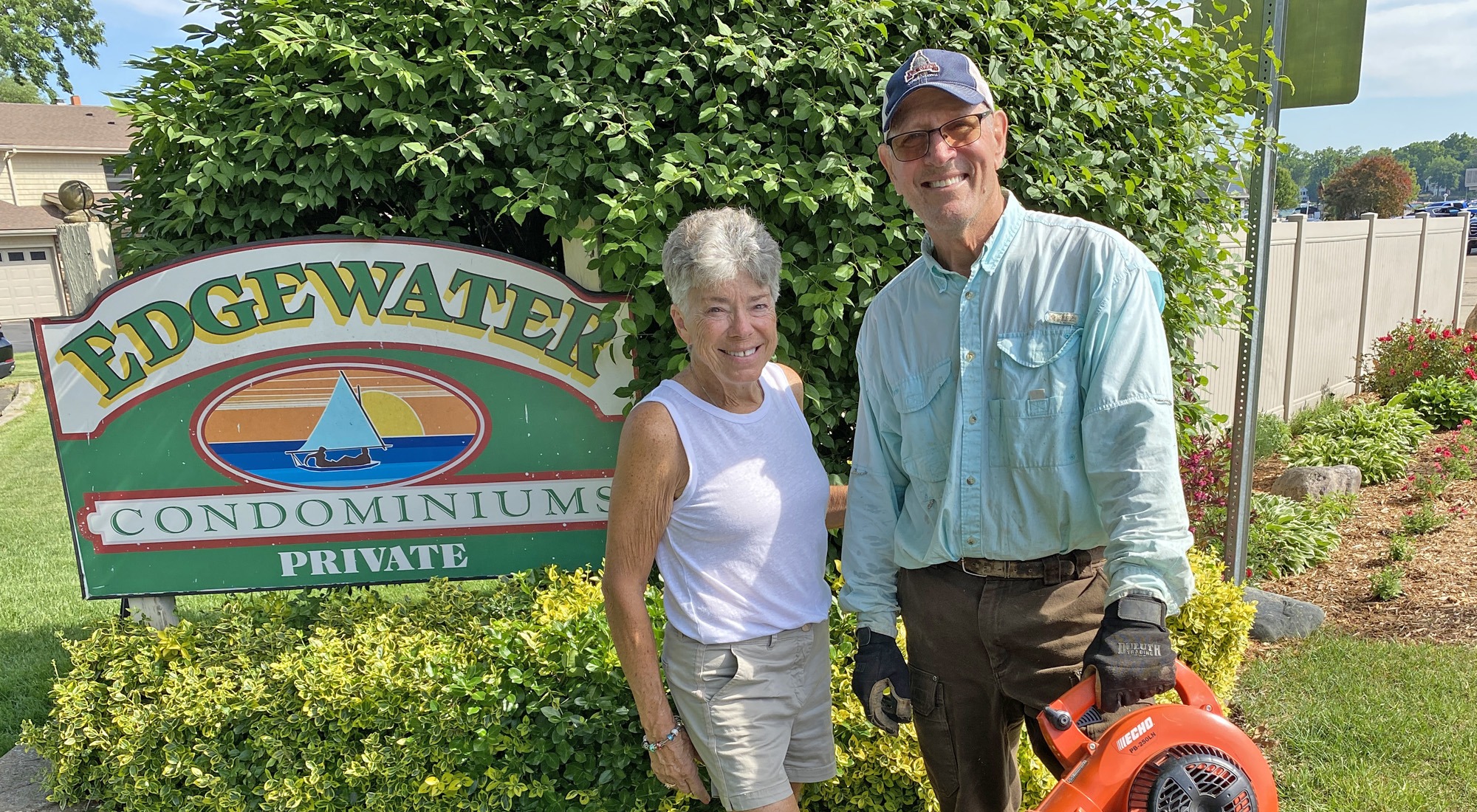
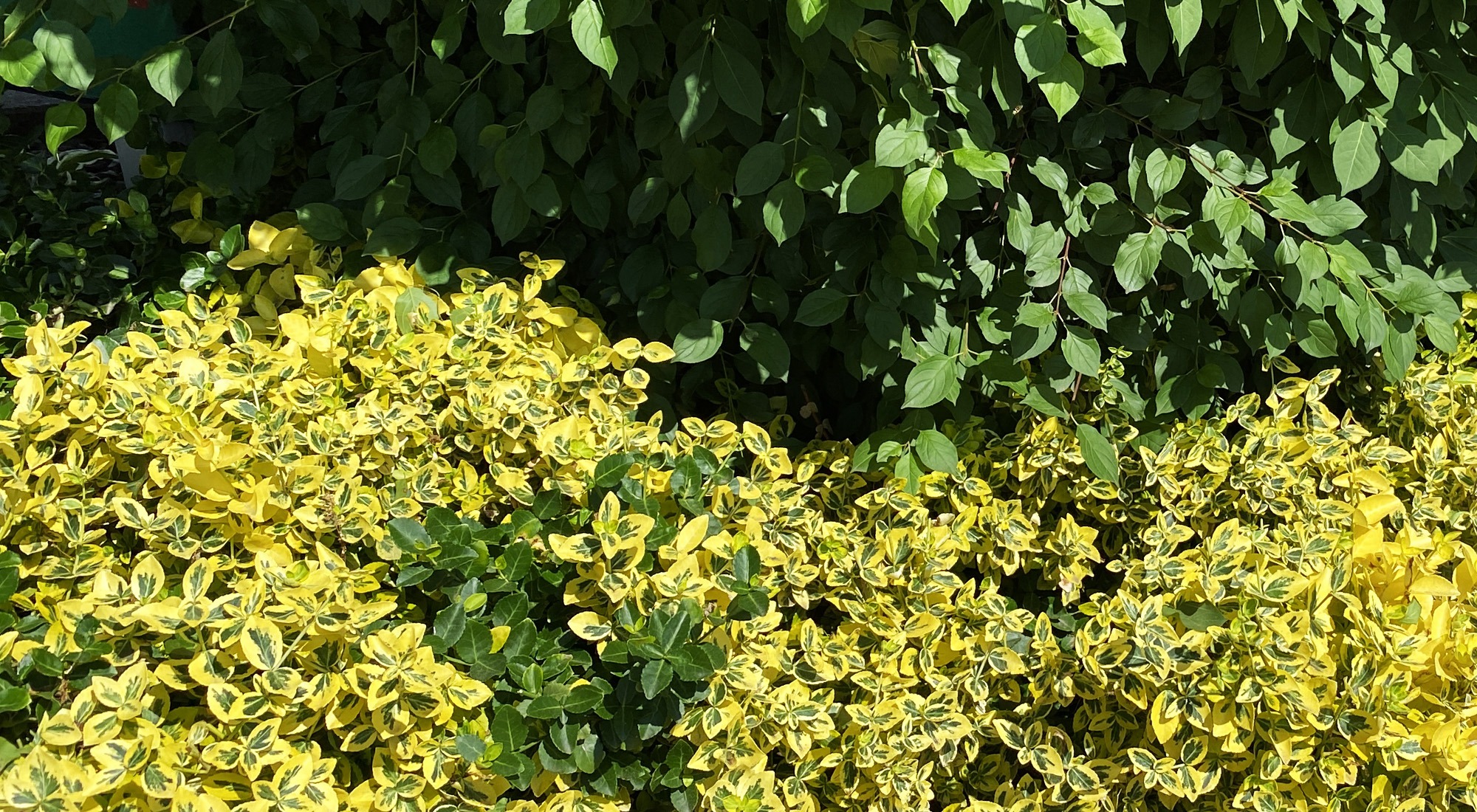
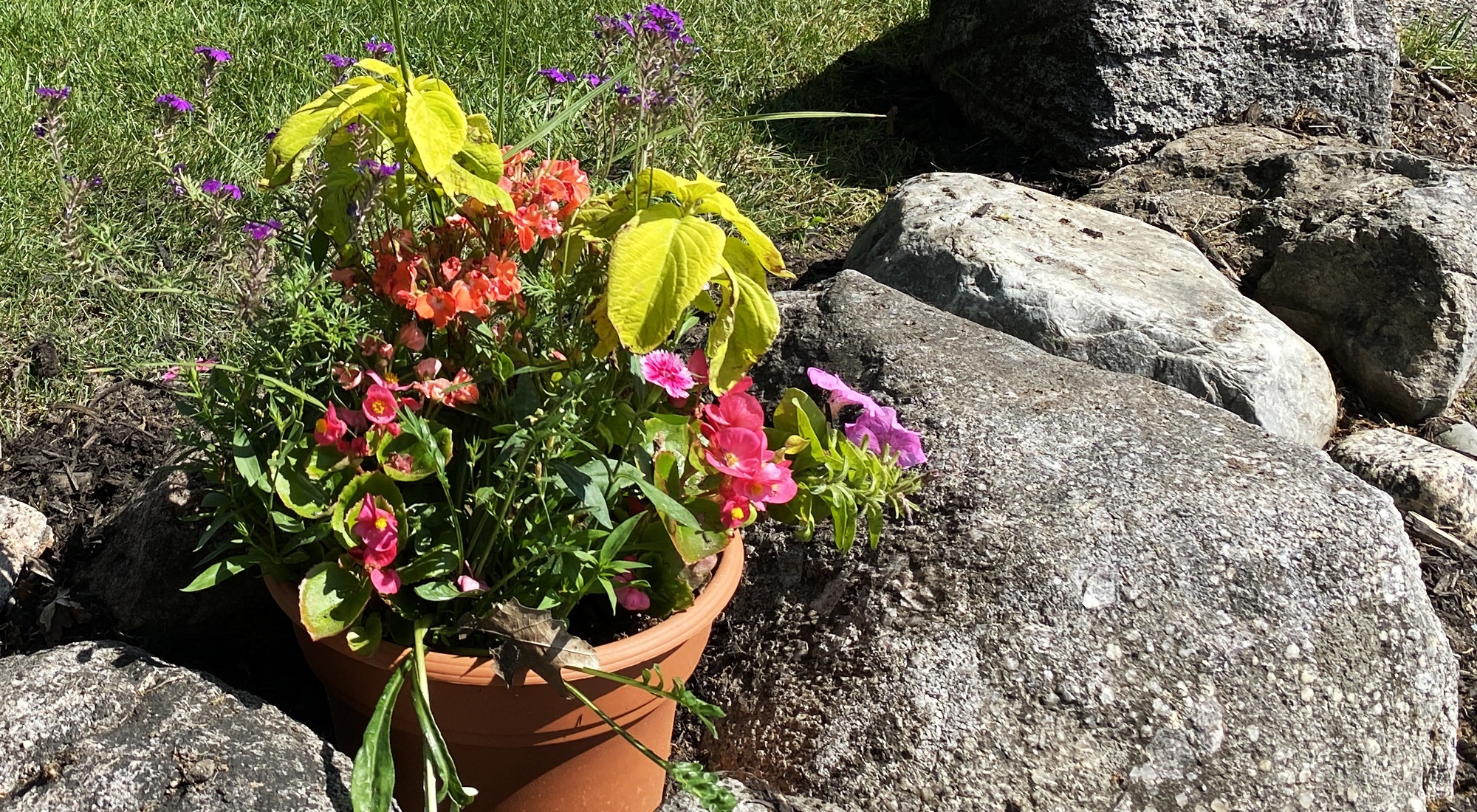
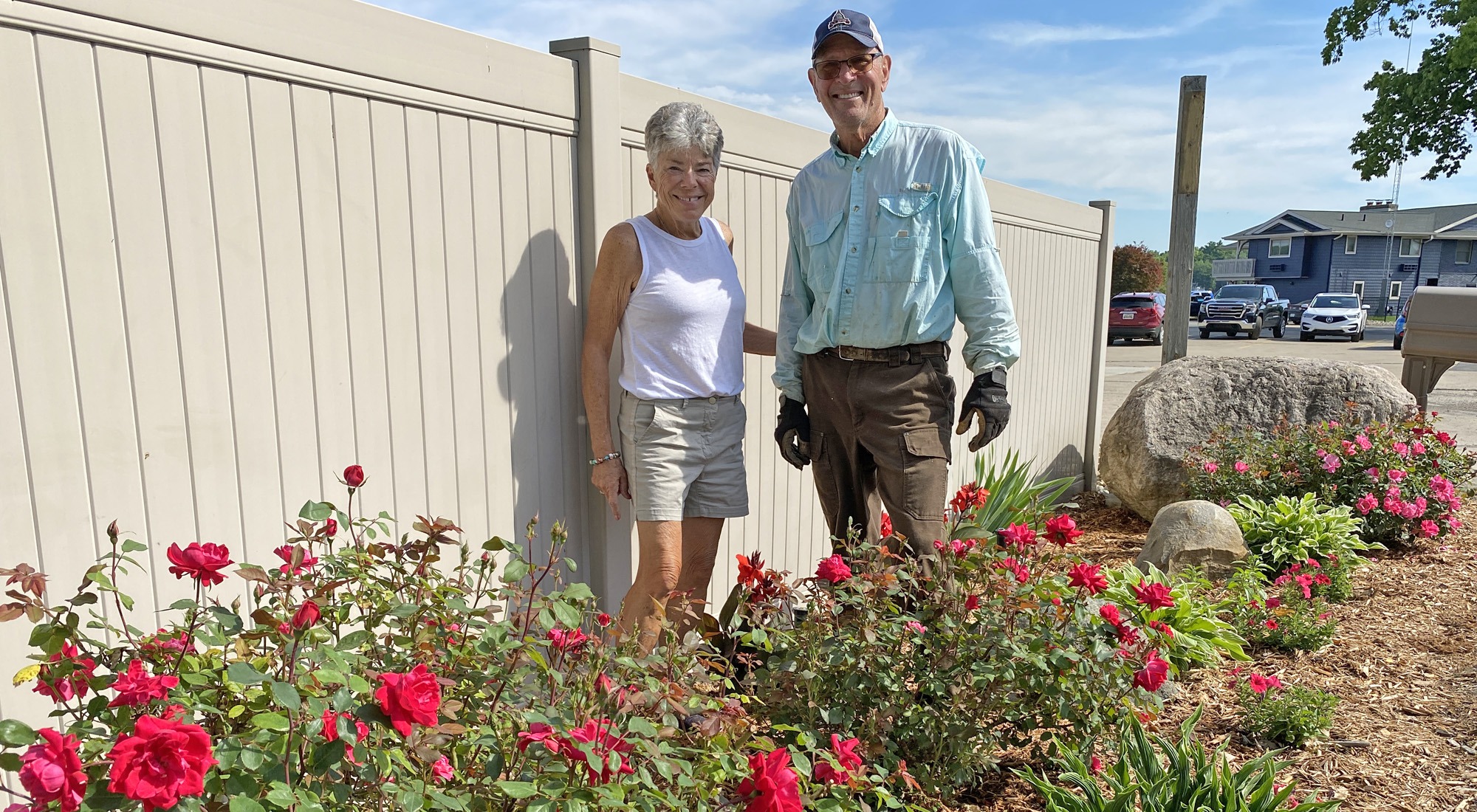





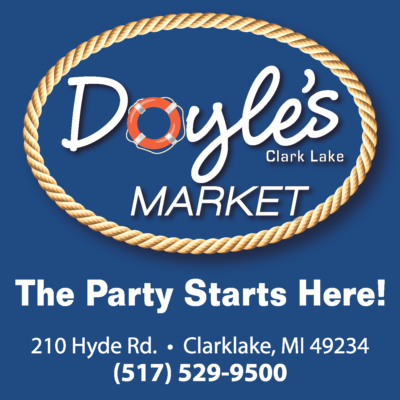
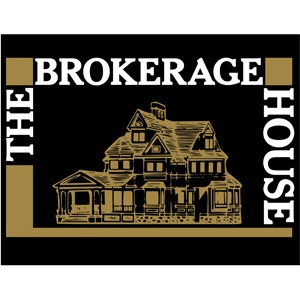
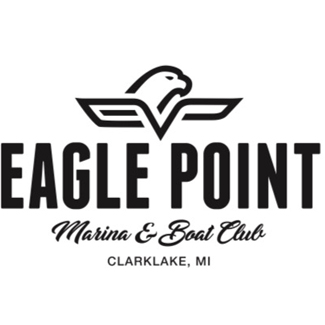




great story
hopefully you can report a totally completed goal story very soon